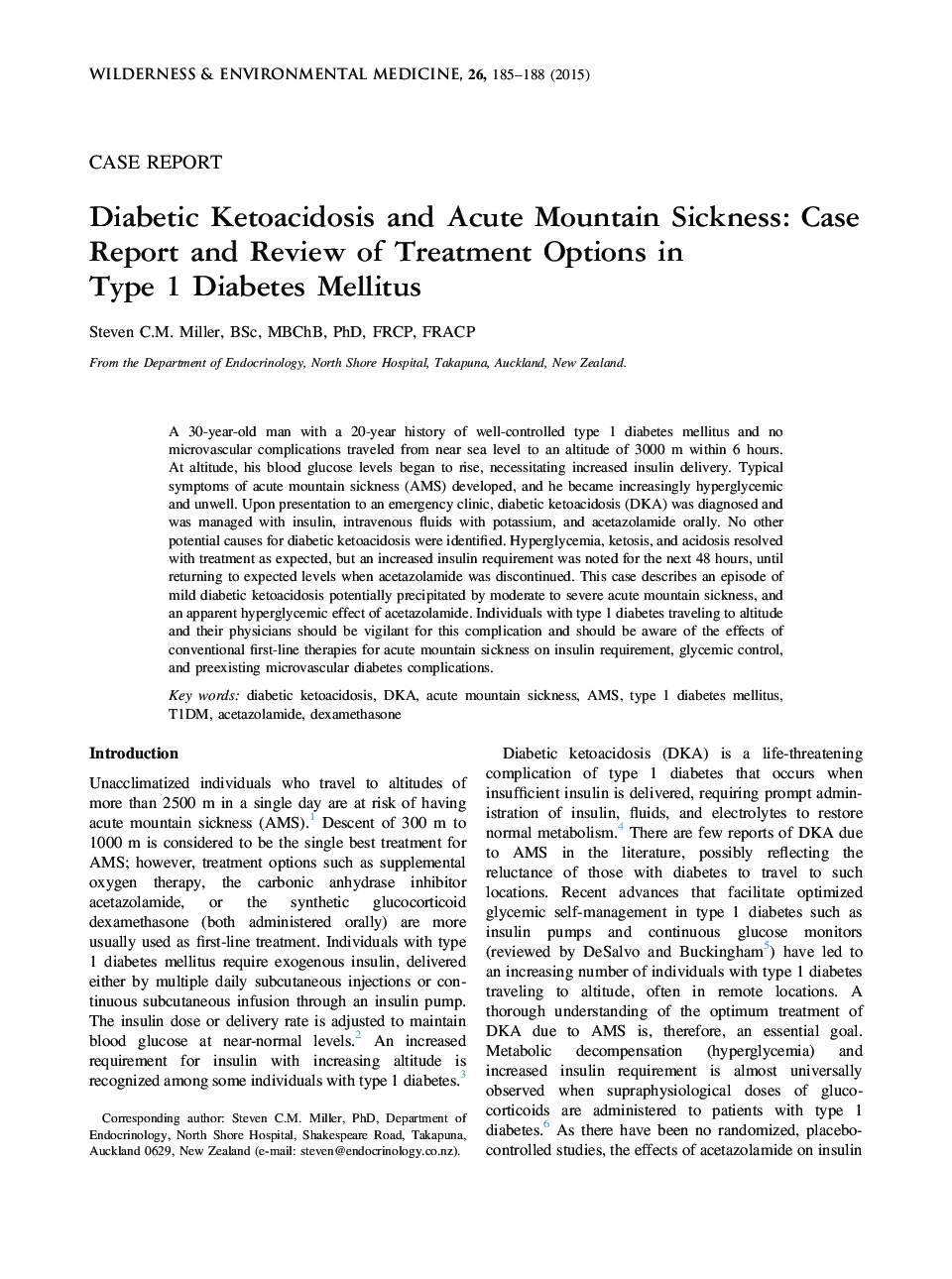| Article ID | Journal | Published Year | Pages | File Type |
|---|---|---|---|---|
| 2613438 | Wilderness & Environmental Medicine | 2015 | 4 Pages |
A 30-year-old man with a 20-year history of well-controlled type 1 diabetes mellitus and no microvascular complications traveled from near sea level to an altitude of 3000 m within 6 hours. At altitude, his blood glucose levels began to rise, necessitating increased insulin delivery. Typical symptoms of acute mountain sickness (AMS) developed, and he became increasingly hyperglycemic and unwell. Upon presentation to an emergency clinic, diabetic ketoacidosis (DKA) was diagnosed and was managed with insulin, intravenous fluids with potassium, and acetazolamide orally. No other potential causes for diabetic ketoacidosis were identified. Hyperglycemia, ketosis, and acidosis resolved with treatment as expected, but an increased insulin requirement was noted for the next 48 hours, until returning to expected levels when acetazolamide was discontinued. This case describes an episode of mild diabetic ketoacidosis potentially precipitated by moderate to severe acute mountain sickness, and an apparent hyperglycemic effect of acetazolamide. Individuals with type 1 diabetes traveling to altitude and their physicians should be vigilant for this complication and should be aware of the effects of conventional first-line therapies for acute mountain sickness on insulin requirement, glycemic control, and preexisting microvascular diabetes complications.
